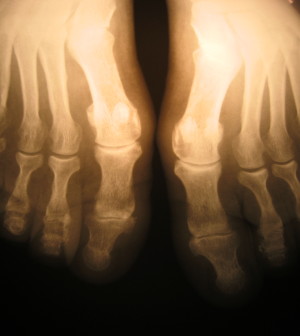- Navigating Your Midlife Crisis: Embracing New Possibilities
- City Raccoons Showing Signs of Domestication
- Mapping the Exposome: Science Broadens Focus to Environmental Disease Triggers
- One Week Less on Social Media Linked to Better Mental Health
- Your Brain Changes in Stages as You Age, Study Finds
- Some Suicide Victims Show No Typical Warning Signs, Study Finds
- ByHeart Formula Faces Lawsuits After Babies Sickened With Botulism
- Switch to Vegan Diet Could Cut Your Greenhouse Gas Emissions in Half
- Regular Bedtime Does Wonders for Blood Pressure
- Dining Alone Could Mean Worse Nutrition for Seniors
Many Doctors Underestimate Risks of Prescription Painkillers: Survey


Doctors who are ill-informed about narcotic painkillers are unintentionally contributing to their misuse, new research suggests.
Almost half of 1,000 primary care doctors surveyed in the United States mistakenly believed that abuse-deterrent pills — those that can’t be crushed and snorted or injected — are less addictive than standard narcotic painkillers (opioids).
“Physicians and patients may mistakenly view these medicines as safe in one form and dangerous in another, but these products are addictive no matter how you take them,” wrote study leader Dr. G. Caleb Alexander, co-director of the Center for Drug Safety and Effectiveness at Johns Hopkins Bloomberg School of Public Health in Baltimore.
“If doctors and patients fail to understand this, they may believe opioids are safer than is actually the case and prescribe them more readily than they should,” he said in a Hopkins news release.
Primary care doctors — internists, family physicians and general practitioners — are the top prescribers of painkillers in the United States, the researchers said. Prescription drug overdose death rates in the United States have more than tripled since 1990, and use of prescription painkillers nearly doubled between 2000 and 2010, they pointed out in background notes. These include drugs such as oxycodone (OxyContin, Percocet); hydrocodone (Vicodin); morphine (Kadian, Avinza); and codeine.
The survey was conducted between February and May 2014. One-third of the doctors also said they believed that most prescription drug abusers don’t take pills by mouth, as intended. Research has shown, however, that the overwhelming majority do. Many fewer snort or inject prescription painkillers, the study’s authors noted.
“Doctors continue to overestimate the effectiveness of prescription pain medications and underestimate their risks, and that’s why we are facing such a public health crisis,” Alexander said.
“When it comes to the opioid epidemic, we must be cautious about overreliance on technological fixes for what is first and foremost a problem of overprescribing,” he added.
All of the doctors surveyed believed that prescription drug abuse was at least a minor problem in their communities. More than half felt it was a “big” issue. Overall, measures that could potentially reduce narcotic painkiller abuse were widely supported.
For instance, almost nine out of 10 “strongly supported” limiting patients who get narcotics to just one prescriber and/or pharmacy, which would restrict the number of pills they could receive.
Two-thirds of the doctors said they strongly supported “contracts” in which patients agree to use their medication as directed and not sell or give it to anyone else. And more than half strongly supported urine tests for chronic painkiller users to monitor appropriate medication use.
The survey results were published online June 23 in the Clinical Journal of Pain.
More information
The U.S. National Institute on Drug Abuse provides more information on prescription drug abuse.
Source: HealthDay
Copyright © 2025 HealthDay. All rights reserved.










